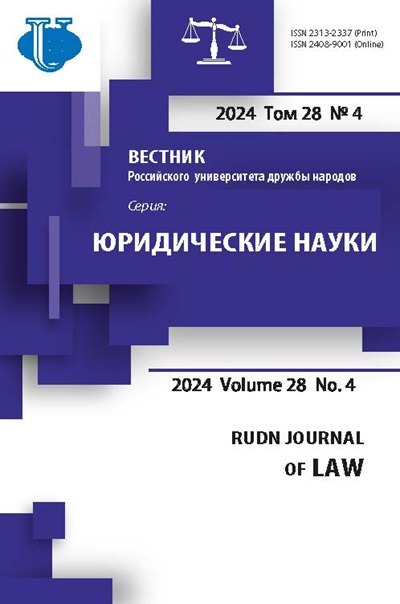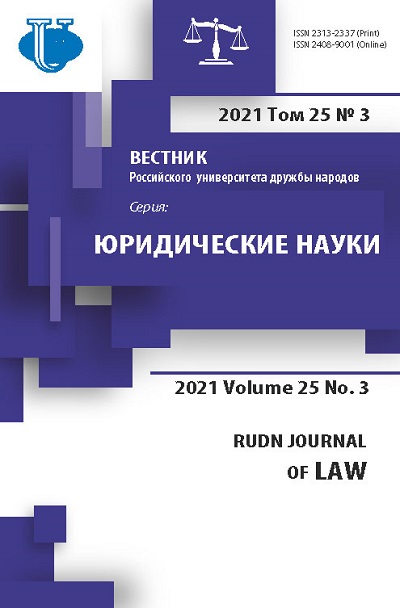Соглашения Российской и Британской империй с Йэттишаром: историко-правовое исследование
- Авторы: Почекаев Р.Ю.1
-
Учреждения:
- Национальный исследовательский университет «Высшая школа экономики»
- Выпуск: Том 25, № 3 (2021)
- Страницы: 527-544
- Раздел: ГОСУДАРСТВО И ПРАВО В СОВРЕМЕННОМ МИРЕ
- URL: https://journals.rudn.ru/law/article/view/27216
- DOI: https://doi.org/10.22363/2313-2337-2021-25-3-527-544
Цитировать
Полный текст
Аннотация
Актуальность статьи обусловлена необходимостью осмысления исторического опыта международных отношений в центрально-азиатском регионе в контексте противостояния «великих держав» за сферы влияния. Объектом исследования являются отношения России и Великобритании с самопровозглашенным государством Йэттишар (также фигурирующим в исследовательских трудах как Кашгария), существовавшим в 1864-1877 гг. в Восточном Туркестане. В качестве предмета исследования выступают торговые договоры, заключенные с этим государством Российской и Британской империями, соответственно в 1872 и 1874 гг. Целью исследования является историко-правовой анализ содержания договоров. Автор предпринимает попытку ответить на вопросы, в какой степени эти договоры свидетельствовали о признании двумя империями Йэттишара в качестве субъекта международных отношений, и как заключение этих договоров отражало противостояние империй в Центральной Азии - в рамках так называемой «Большой игры». Основными методами исследования являются формально-юридический, историко-правовой и сравнительно-правовой подходы, наряду с которыми автор использует юридико-антропологический и общеисторический исследовательский инструментарий. Полученные результаты до некоторой степени отражают и современные подходы России и западных держав в выстраивании правоотношений со своими партнерами в Центральной Азии, учет ими политической ситуации, политико-правовых и культурных традиций стран и народов региона.
Об авторах
Роман Юлианович Почекаев
Национальный исследовательский университет «Высшая школа экономики»
Автор, ответственный за переписку.
Email: rpochekaev@hse.ru
ORCID iD: 0000-0002-4192-3528
доктор исторических наук, кандидат юридических наук, доцент, заведующий кафедрой теории и истории права и государства, Юридический факультет
Российская Федерация, 198099, г. Санкт-Петербург, Промышленная ул., д. 17Список литературы
- Alder, G.J. (1963) British India’s Northern Frontier, 1865-95: A study in imperial policy. London, Longmans, Green and Co., Ltd
- Алпысбес М.А., Ергалиева Д.С., Халиева А.Н. История государства Якуб-бека и «Большая игра» в Восточном Туркестане // Отан тарихы. 2018. № 3 (83). С. 155-168
- Байкова Н.Б. Англо-кашгарский торговый договор 1874 г. (Из истории «среднеазиатского вопроса»). Автореф. дис.… канд. ист. наук. Ташкент, 1952. 18 с.
- Басханов М.К. Политика Англии в отношении государства Якуб-бека // Из истории международных отношений в Центральной Азии (средние века и новое время) / отв. ред. Г.М. Исхаков. Алма-Ата: Гылым, 1990. С. 100-133
- Bellew, H.W. (1875) Kashmir and Kashghar: A Narrative of the Journey of the Embassy to Kashghar in 1873-1874. London, Truner & Co.
- Biddulph, J. (1874) The Atalik Ghazee, with sketch of the history of Kashghar since 1863. Calcutta, Private Secretary’s Office Press.
- Boulger, D.Ch. (1878) The life of Yakoob Beg, athalik Ghazi and Badaulet, ameer of Kashgar. London, W.H. Allen & Co.
- Гарбузарова Е.Г. Восточный Туркестан в спектре геополитических интересов России и Великобритании в XIX в. // AUCA Academic Review. 2009. Вып. 1. C. 55-63.
- Henze, P.B. (1989) The Great Game in Kashgaria. British and Russian missions to Yakub Beg. Central Asian Survey. 8 (2), 61-95.
- Исиев Д.А. Уйгурское государство Йэттишар (1864-1877). М.: Наука, 1981. 92 с.
- Karpat, K.H. (1991) Yakub Bey’s relations with the Ottoman sultans: A reinterpretation. Cahiers du monde russe et soviétique. XXXII. (1), 17-32.
- Халфин Н.А. Присоединение Средней Азии к России (60-90-е годы XIX в.). М.: Наука, 1965. 468 с.
- Kiernan, V.G. (1955) Kashghar and the Politics of Central Asia, 1868-1878. Cambridge Historical Journal. 11 (3), 317-342.
- Kim, H. (2004) Holy War in China: The Muslim rebellion and state in Chinese Central Asia, 1864-1877. Stanford University Press
- Куропаткин А.Н. Кашгария. Историко-географический очерк страны, ее военные силы, промышленность и торговля. СПб.: Типография В.С. Балашева, 1879. 435 с
- Маев Н. Торговые сношения с Кашгаром // Материалы для статистики Туркестанского края. Вып. IV. СПб.: Типография и хромолитография А. Траншеля, 1876. С. 86-89
- Моисеев С.В. Миссия А.В. Каульбарса в Йиэттишаре и подписание русско-кашгарского торгового договора в 1872 г. // Россия, Сибирь и Центральная Азия: взаимодействие народов и культур: материалы III Международной научно-практической конференции, 15-16 ноября 2001 г. / отв. ред. В.С. Бойко. Барнаул: Изд-во Барнаульского государственного педагогического ун-та, 2001. С. 21-26
- Моисеев С.В. Взаимоотношения России и Уйгурского Государства Йэттишар в 1864-1877 гг.: дисс. … канд. ист. наук. Барнаул, Барнаульский государственный педагогический университет, 2003. 224 с
- Моисеев С.В. Причины и последствия заключения русско-кашгарского торгового договора 1872 г. // Известия Алтайского государственного университета. 2019. № 6 (110). С. 75-80
- Morrison, A. (2019) British India and the Chinese borderlands, 1869-1950: The political and secret records of the Government of India, India Office Library, British Library. London, Cengage Learning
- Newby, L.J. (2005) The Empire and the Khanate: A Political History of Qing Relations with Khoqand c. 1760-1860. Leiden, Boston, Brill
- Pierce, R.A. (1960) Russian Central Asia 1867-1917: A Study in Colonial Rule. Berkeley; Los Angeles, University of California Press
- Сергеев Е.Ю. Большая игра, 1856-1907: мифы и реалии российско-британских отношений в Центральной и Восточной Азии. М.: Товарищество научных изданий КМК, 2012. 454 с.
- Терентьев М.А. Россия и Англия в Средней Азии. СПб.: Типография П.П. Меркульева, 1875. 361 с.
- Валиханов Ч.Ч. О состоянии Алтышара или шести восточных городов Китайский провинции Нан-Лу (Малой Бухарии) в 1858-1859 годах // Валиханов Ч.Ч. Собрание сочинений в пяти томах. Т. 3. Алма-Ата: Главная редакция Казахской советской энциклопедии, 1985. С. 97-218
- Васильев Д.В. Устроитель Туркестанского края (к биографии К.П. фон-Кауфмана) // Сборник Русского исторического общества. Т. 5 (153). 2002. С. 45-57
- Васильев А.Д. Джетишаар в системе международных отношений во второй половине XIX в. // Центральная Азия на перекрестке европейских и азиатских политических интересов: XVIII-XIX вв.: сб. научных трудов международного семинара. Алма-Ата, 19-23 августа 2019 г. / науч. ред. Д.В. Васильев. М.: ОнтоПринт, 2019. С. 262-273
- Веселовский Н. Бадаулет Якуб-Бек, аталык Кашгарский // Записки Восточного отделения Императорского Русского археологического общества. Т. ХI. 1899. С. 87-105
















